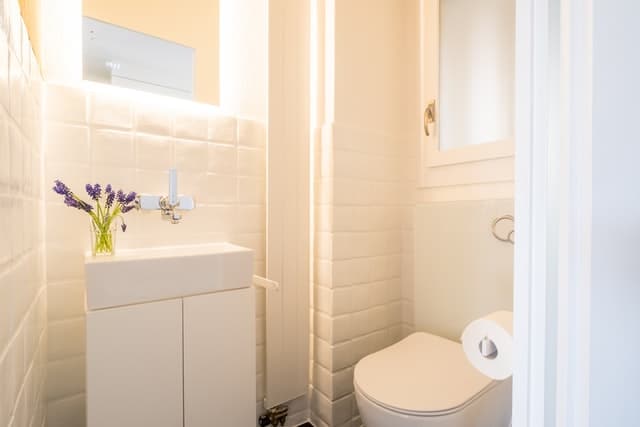There are many plumbing jobs that require you to trap water, in order to carry out the job. A house trap is a system that allows you to isolate and then control water flow in the plumbing system. The two most common types of these systems are waste traps and scuppers.
A typical waste trap, also known as a sewage ejector, is designed for discharging or removing waste water from a plumbing system.
Wastewater can be considered to be sewage or gray water if it contains human feces and toilet paper flushing.

Wastewater may also contain grease from cooking with oils, soap scum on shower heads and hair conditioner build-up.
Another type of wastewater treatment device commonly found in commercial buildings is the toilet suite mixer, which can be used as both a disposal facility for human wastes (usually by sanitary sewer connection) and as an outlet into which graywater can be diverted through valves mounted within the toilet bowl itself.
These are usually found in a separate building from the toilet itself, and are normally located away from toilets that flush directly into the sewer system. The use of such systems is regulated by most municipal sewage authorities.
What You Should Know About Outdated House Trap
In general, most houses are set up with old style toilets and sinks. The toilet bowl is connected to the toilet trap or the waste pipe which goes to a septic tank.
This means that any water that goes down the drain from a toilet bowl cannot be controlled by using a sewer trap. In addition, if you do not have one of these drains, then your sink will get wet every time you flush your toilet (or if you don’t often flush enough).
This can cause problems with pipes, especially during cold weather when they freeze up, causing damage and making it difficult for people to turn on their faucets in some areas.
The more modern toilets and sinks have a plumbing trap which connects to the waste pipe or the drain in the wall that leads to a septic tank. This means that any water that goes down the drain from a toilet bowl cannot be controlled by using a trap.
Why Are House Traps No Longer Needed?
Trap systems are no longer needed in modern plumbing. If you have a modern toilet, the toilet trap will connect to the drain line of your septic tank. Your home is connected to a sewer system, and you do not need an old style system any more.
You should know that there are some cities in the US that still require them, but they are few and far between now-a-days.
The plumber’s job of fixing this problem can be easy or hard depending on what is wrong with your pipes.
If it is only water dripping from the sink into the bowl, then all you need to do is putty up any cracks around where the pipe connects at your sink and put some caulk around where it connects to the drain pipe coming out of your wall.
The next step would be for him/her to take off any obstructions like washers, screws etc from under/around where this connection takes place in order for it to function properly again so that water can flow freely through it again.
It will probably take one or two visits by different plumbers before they get everything fixed correctly.

Why Are House Traps Dangerous?
A house trap can cause serious problems if the waste is not completely trapped and discharged.
For example, when a septic tank is overloaded or contains biological waste and dangerous sewer gases, a house trap can allow sewage to back up into the plumbing system and then be pumped into your house through any number of outlets (e.g., water lines, drains, sewers).
This is known as “drain back” or “sewer back”. The main cause of these discharges from septic tanks and cesspools comes from insufficient sealing around the pipe that connects to the sewer system.
House traps are not designed to handle these types of septic tank discharges and gases. If you notice that your house is getting wet or your toilets are not flushing properly, then you may have a leaky house trap.
You can check for leaks in the toilet and sink drains by placing a string or ribbon across them. If water is flowing through, then you probably have a leak.
It is important to call a plumber immediately to come fix this problem if it continues for more than just a few days at a time, because sewage can be deadly if it backs up into your home and causes an explosion.
